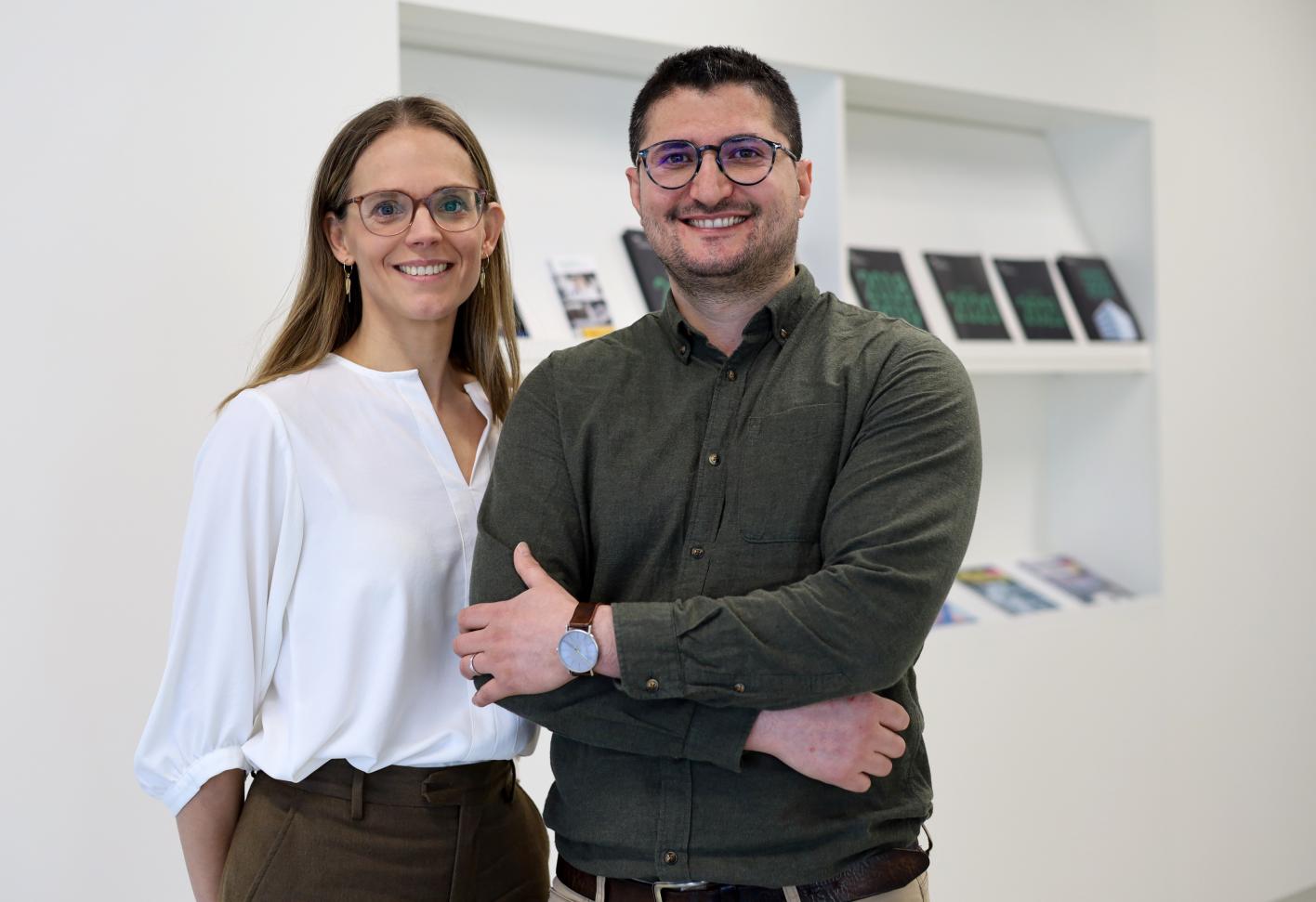Project leader Dr.-Ing. Abdolrahman Omidinia Anarkoli and working group leader Prof. Dr.‑Ing. Laura De Laporte at the DWI - Leibniz Institute for Interactive Materials, have been awarded a Proof of Concept Grant from the European Research Council (ERC) for their project "AnisoPlate". Their aim is to investigate the technical and commercial potential of their newly developed device. With this technology, they want to produce three-dimensional, hydrogel-based human tissue models in high throughput that exhibit a controllable spatial orientation and macroporous structures. The cell and tissue models that are currently commercially available do not do justice to the orientation-dependent complexity of natural human tissue. Neither the expansion or differentiation of stem cells nor tissue structuring can be controlled with existing models. This can lead to unreliable preclinical results in the laboratory, which results in a considerable loss of potential in the research and testing of drugs.
AnisoPlate is designed to remedy this situation: The handheld device consists of plates manufactured specifically for this project, on which standardized culture plates can be placed to grow cells and tissue in three-dimensional hydrogels. An external magnetic field is applied so that magnetic micro-rods inside the hydrogel precursor solution align along the field before gelation and fixation. It is known from previous work by De Laporte's research group that the spatial expansion and orientation of cells and the macro-porosity of hydrogel constructs can be influenced by the alignment and arrangement of rod-shaped magnetic particles. With this approach, they want to provide a technology for customers to easily produce structured tissue models that come closer to the complexity of natural tissue.
The aim of the AnisoPlate research project is, therefore, to establish a platform technology, together with the AnisoGel materials, that researchers and the pharmaceutical industry can use to obtain relevant biological information in a standardized and reproducible manner, for example for preclinical studies of drugs. This could lead to significant cost and time savings. As a result, this technology could also indirectly benefit patients. The research project will be funded by the European Research Council over a period of 18 months.
About Laura De Laporte
Laura De Laporte studied chemical engineering at Ghent University (Belgium). She received her PhD from Northwestern University (Evanston, USA) in the group of Prof. Lonnie Shea, where she developed guided implants for nerve regeneration. At EPFL (Lausanne, Switzerland), she researched regenerative hydrogels in the group of Prof. Jeffrey Hubbell. From 2013 to 2018, Laura De Laporte led a junior research group at DWI – Leibniz Institute for Interactive Materials in Aachen and was awarded a Starting Grant from the European Research Council in 2015. In October 2017, she completed her habilitation at the Department of Chemistry of RWTH Aachen University. In 2018, she was one of five excellent female researchers who have received funding from the Leibniz Programme for female Professors and became an associate professor in the Chemistry Department with the teaching and research area Advanced Materials for Biomedicine. Since 2021, she is also part of the Institute for Applied Medical Engineering and affiliated to the University Hospital RWTH Aachen. In 2022, De Laporte received an ERC Consolidator Grant for the "Heartbeat" project.
About Abdolrahman Omidinia Anarkoli
Abdolrahman Omidinia Anarkoli received his PhD from RWTH Aachen University in the group of Prof. De Laporte, where he developed the AnisoGel for nerve regeneration. He is one of the inventors of the patented technology and holds the know-how and expertise in magnetic field simulation, fiber spinning, 3D bioprinting, and millifluidics. His research interests lie in the area of engineered tissues with biomimetic architectures for their use as in vitro tissue models and in vivo regenerative biomaterials.
About ERC Proof of Concept Grants
Frontier research often generates radically new ideas that drive innovation and business inventiveness and tackle societal challenges. The ERC PoC Grants aim at facilitating exploration of the commercial and social innovation potential of ERC funded research and are therefore available only to PIs whose proposals draw substantially on their ERC funded research. Proof of Concept Grants aim at maximizing the value of the excellent research that the ERC funds, by funding further work (i.e. activities which were not scheduled to be funded by the original ERC frontier research grant) to verify the innovation potential of ideas arising from ERC funded projects.

